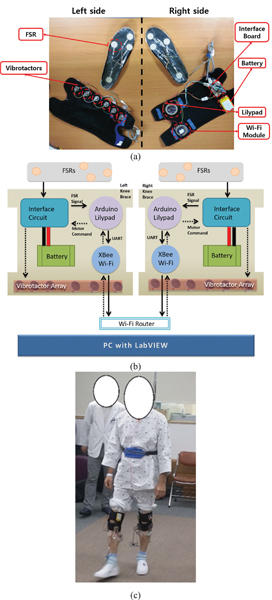 Variations in biofeedback coding schemes for postural control, in recent research, have shown significant differences in performance outcomes due to variations in coding schemes. However, the application of vibrotactile biofeedback coding schemes to gait symmetry training is not well explored. In this paper, we devised various vibrotactile biofeedback modes and identified their efficacy during gait symmetry training of individuals suffering from hemiparesis due to stroke. These modes are composed of variations in vibration type (on-time or intensity), and relation type (proportional or inversely-proportional) with the error in symmetry ratio. Eight individuals with stroke participated in walking trials. From dependent t-tests on the collected data, we found improved achievement of temporal gait symmetry while utilizing all the provided biofeedback modes compared to no biofeedback (P < 0.001). Furthermore, two-way repeated measures ANOVA revealed statistically significant difference in symmetry ratio for main effect of vibration type (P-value = 0.016, partial eta squared = 0.585). The participants performed better with modes of biofeedback with varying vibration on-times. Furthermore, participants showed better performance when the biofeedback varied proportionally with the error. These findings suggest that biofeedback coding schemes may have a significant effect on the performance of gait training.
Variations in biofeedback coding schemes for postural control, in recent research, have shown significant differences in performance outcomes due to variations in coding schemes. However, the application of vibrotactile biofeedback coding schemes to gait symmetry training is not well explored. In this paper, we devised various vibrotactile biofeedback modes and identified their efficacy during gait symmetry training of individuals suffering from hemiparesis due to stroke. These modes are composed of variations in vibration type (on-time or intensity), and relation type (proportional or inversely-proportional) with the error in symmetry ratio. Eight individuals with stroke participated in walking trials. From dependent t-tests on the collected data, we found improved achievement of temporal gait symmetry while utilizing all the provided biofeedback modes compared to no biofeedback (P < 0.001). Furthermore, two-way repeated measures ANOVA revealed statistically significant difference in symmetry ratio for main effect of vibration type (P-value = 0.016, partial eta squared = 0.585). The participants performed better with modes of biofeedback with varying vibration on-times. Furthermore, participants showed better performance when the biofeedback varied proportionally with the error. These findings suggest that biofeedback coding schemes may have a significant effect on the performance of gait training.

